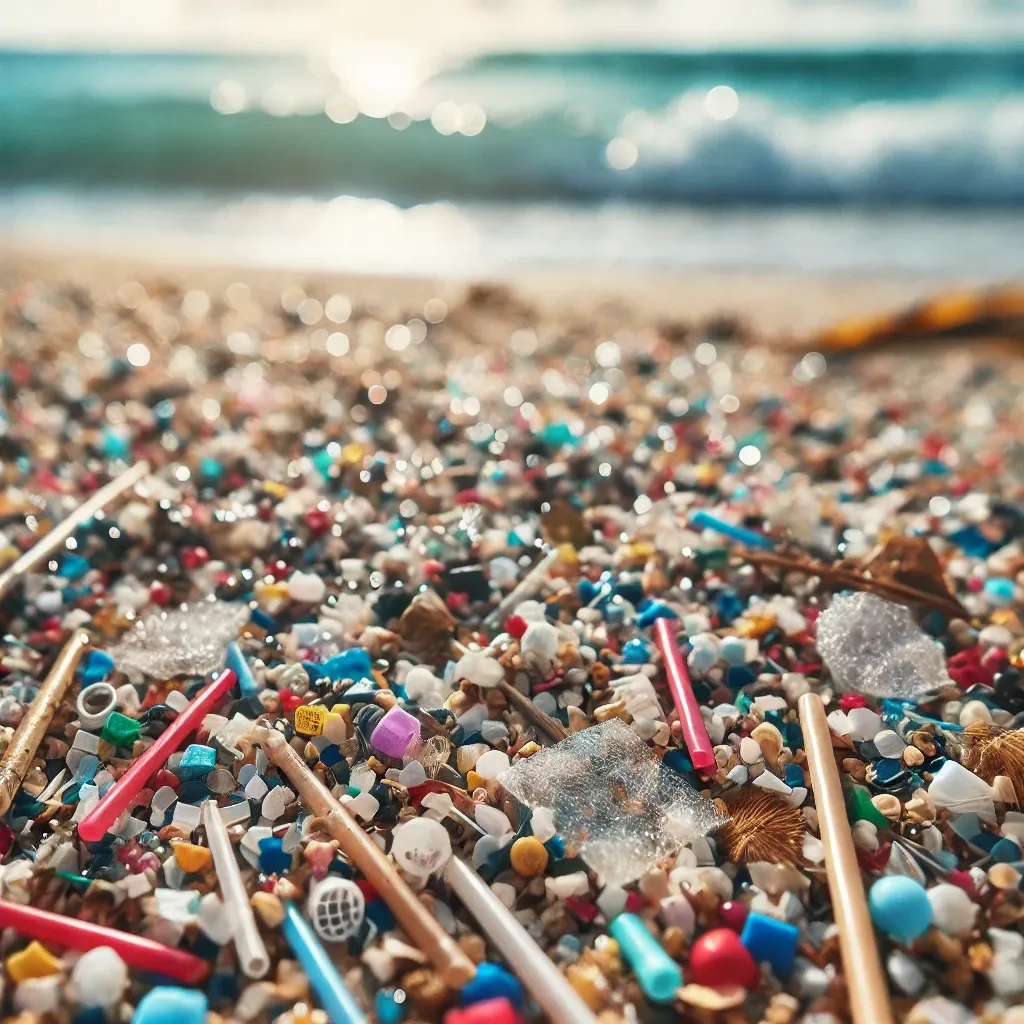What are the primary sources of microplastics?
Article Source
From the research paper "Microplastics Pollution: A Comprehensive Review on the Sources, Fates, and Impacts" Read Full Article

Why You Should Care
Microplastics are tiny pieces of plastic that pollute our environment, harm wildlife, and can even end up in our food and water. Understanding where these microplastics come from helps us tackle the problem and protect our planet. This knowledge can guide us to make better choices in our daily lives and support policies that reduce plastic pollution.
Answering the Question: What are the primary sources of microplastics?
From a researcher's perspective, the primary sources of microplastics are varied and widespread. They include synthetic textiles, tire wear, personal care products, and industrial processes. For example, washing synthetic clothes releases millions of microplastic fibers into water systems. Tire wear particles, from driving cars, contribute significantly to microplastic pollution, as do microbeads in cosmetics.
How Was the Study Done?
Researchers reviewed numerous scientific studies and reports to gather data on microplastic sources. They conducted experiments to measure the release of microplastics from different activities and used computer models to estimate the contribution of various sources to overall pollution. This comprehensive approach allowed them to identify and prioritize the most significant sources of microplastics.
What Was Discovered?
- Synthetic Textiles: Washing synthetic clothes can release up to 700,000 microplastic fibers per wash. Annually, this can add up to 500,000 tons of microplastics entering the ocean. For context, a single load of laundry can shed enough fibers to make a ball of yarn!
- Tire Wear: Driving cars produces about 1.5 million tons of microplastics annually worldwide. That's equivalent to the weight of about 150 Eiffel Towers.
- Personal Care Products: Products like exfoliating scrubs can contain up to 90,000 microbeads per bottle. This contributes to the estimated 8 trillion microbeads entering U.S. aquatic habitats daily, enough to cover 300 tennis courts every day.
- Industrial Processes: Industries, especially those involved in plastic production and processing, release billions of microplastic particles into the environment annually, contributing significantly to pollution. In the UK alone, industrial processes are estimated to release 500,000 tons of microplastics each year.
- Urban Runoff: Rainwater washes microplastics from streets and urban areas into rivers and oceans, with urban runoff contributing up to 23% of microplastic pollution in some water bodies. In highly urbanized areas, this can result in over 50,000 tons of microplastics being washed into the ocean annually.
- Wastewater Treatment Plants: These plants capture some microplastics, but up to 90% can still escape into the environment, totaling around 800,000 tons per year globally.
- Atmospheric Deposition: Microplastics are also found in the air we breathe, with studies showing that 4 to 7 tons of microplastics settle per square kilometer annually. In cities like Paris, it’s estimated that up to 10 tons of microplastics settle from the air each year, equivalent to the weight of about 1.5 African elephants.
Why Does It Matter?
Understanding the sources of microplastics is crucial for developing effective strategies to reduce pollution. By identifying the major contributors, we can target efforts to curb emissions and implement better waste management practices.
This knowledge also empowers individuals to make informed choices, such as reducing the use of synthetic textiles and personal care products with microbeads, thereby contributing to a cleaner environment.
Microplastics are a growing concern, but by understanding their sources, we can take steps to mitigate their impact and protect our planet for future generations.
Reference:
- Microplastics Pollution: A Comprehensive Review on the Sources, Fates, and Impacts. Read Full Article
